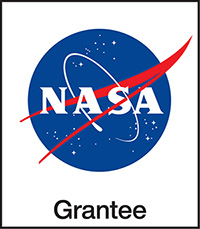Ready, S.E.T. (Science, Engineering, Technology), Go!
Learners scientifically investigate the energy from space trash impacts, and they engineer a device to protect against those impacts.
- Each PLANETS unit begins with Ready S.E.T. Go! to set context. Learners then share their own stories in Adventure 1. Next, educators choose either the Science or Engineering Pathway, or both, if time allows. Learners do not need to repeat Ready S.E.T. Go! or Adventure 1 when doing both pathways.

Setup: Prep Time 70 min.
- Read unit.
- Print Notebooks.
- Categorize materials.
*See Materials & Preparation in the Educator Guide linked above for full info.

